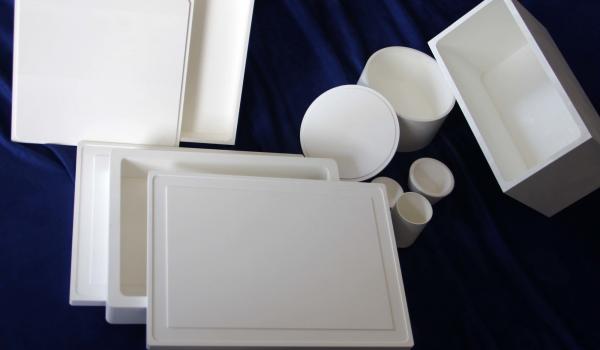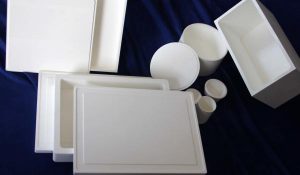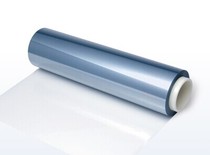- Alumina
- Boron Nitride
- Zirconia
- Other Ceramics
- Applications
- Contact

Thin films forming a group of composite materials are becoming more widely used in optics, electronics and construction of machines. The main tasks of lubricating coatings are improvement of mechanical properties (hardness, elastic modulus), raise of corrosion resistance and, above all, reduction of friction and wear.
One of the most promising materials for that purpose, which fulfill all mentioned requirements, is boron nitride (BN). Boron nitride is inorganic chemical compound, consisting of the same number of boron and nitrogen atoms and is isostructural and isoelectronic with carbon. The most common and stable phases are soft hexagonal boron nitride hBN and hard cubic boron nitride cBN.
All phases of boron nitride have a number of common properties like high thermal and chemical stability, high corrosion resistance, no solubility in water and most common acids. Unlike diamond, BN phases do not react with ferrous metals below the temperature of 1500 C. At the same time, there are significant differences between phases with sp2 and sp3 hybridization. Sp2 phases, like hBN, rBN are very soft and posses lubricating abilities similar to graphite.

Hexagonal boron nitride has good lubricating properties both in low and high temperatures (up to 900o C, even in presence of oxidizing atmosphere). Due to its structure (strong bonds within the layer, weak between layers) hBN shows anisotropic properties, such as in case of conductivity and thermal expansion. Due to covalence-ionic nature of chemical bonds, has very high hardness. It is characterized by low friction coefficient and high wear resistance. In addition, the layered nanocomposites composed of hard cBN and soft hBN phases with good lubricating abilities are ideal for covering surfaces of bearings. Wurtzitic boron nitride (wBN) with hardness similar to cBN, has lower thermodynamic stability and the tendency to transform to stable hBN phase. In the vast majority of cases, BN coatings are deposited on silicon substrate, due to the fact that the highest content of cBN phase was observed on hard, covalence substrates like Si, SiC, diamond, sintered carbides.

Thin BN films deposited on soft metals (Al, Ag) show significantly lower content of cubic phase than those deposited on hard metallic substrates (Nb, Ta, Ni).
For more information, please visit http://www.samaterials.com/204-boron-nitride